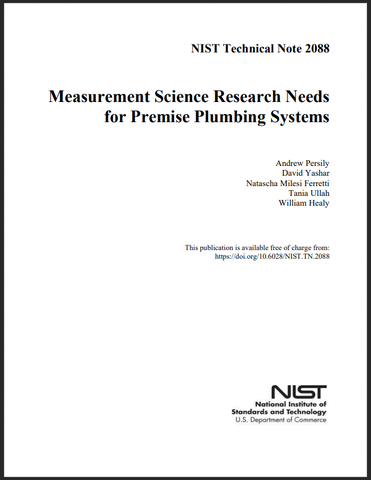Motivation

Premise plumbing systems have provided a key building service for over one hundred years, but those vital systems are in desperate need of modernization as plumbing technology has lagged far behind current performance requirements. Growing awareness of the health and safety impacts of building water quality, along with increasing pressures to improve water and energy efficiency, have led to the recognition of significant knowledge gaps in premise plumbing system design, installation, operation and maintenance. Current design approaches are based largely on technical data that were developed at the National Bureau of Standards (the predecessor to NIST) in the 1980s and earlier, which assumed higher water flow rates than those existing in most current buildings and the use of materials and design concepts that are being replaced by newer alternatives. One of the biggest challenges facing the premise plumbing industry is the fact that water use in buildings is much lower than in the past, and much lower than assumed in the system design. These lower flow rates increase residence times in plumbing systems, enhancing the growth of microbiological pathogens and reducing the effectiveness of disinfectant chemicals. Another critical challenge is the drive to maintain water safety while reducing energy and water consumption, with the best example being the impact of reduced water heater temperatures and water flows on the growth of opportunistic plumbing pathogens such as legionella. If modern premise plumbing systems are to meet the performance goals of protecting occupant health, increasing efficiency, and reducing environmental impacts, an entirely new technical knowledge base must be developed.
To capture the research needs for reaching these goals for premise plumbing systems, NIST teamed with prominent and diverse stakeholders in the plumbing community to identify research topics that need to be addressed to support this transformation. A workshop was held in 2018, and the resulting report, NIST Technical Note 2088 “Measurement Science Research Needs for Premise Plumbing Systems,” provides a set of important topics that NIST and the premise plumbing community should pursue to improve the state of our indoor plumbing systems.

